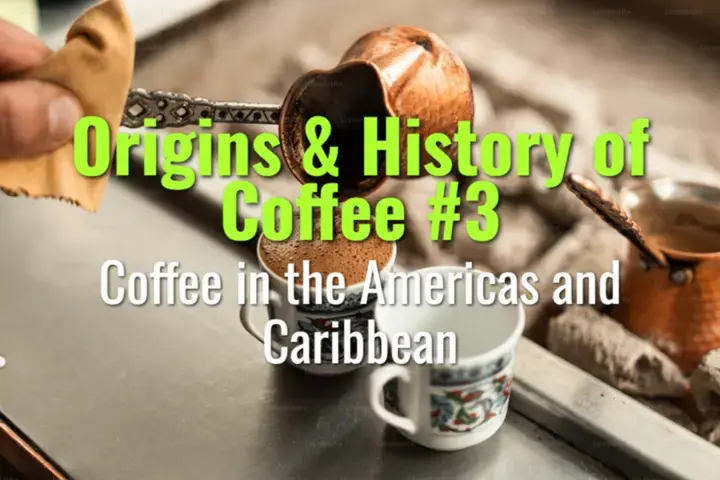Coffee in the Americas and Caribbean
In this topic we trace how coffee plants were introduced to the Americas and Caribbean, how colonial powers expanded cultivation, and how coffee reshaped economies, societies, and trade networks in the New World.
- Coffee Basics Nerds
- 2 min read
Article 3 of 9 in Origins & History of Coffee/

Early Introductions
- French efforts: In 1720, a young coffee seedling was transported from the Jardin des Plantes in Paris to Martinique by Gabriel de Clieu. This plant became the ancestor of much of the Caribbean and Latin American coffee.
- Dutch role: The Dutch had already cultivated coffee in Java, and their colonial networks helped spread the crop to Suriname and Guiana.
- Caribbean plantations: By the mid-1700s, islands like Haiti, Jamaica, Cuba, and Puerto Rico were producing coffee at scale.
Coffee and Colonial Economies
- Haiti (Saint-Domingue): By the late 18th century, Haiti was the world’s leading coffee exporter, supplying over half the global market. The brutal plantation system relied heavily on enslaved African labor.
- Sugar vs coffee balance: In the Caribbean, many colonies combined sugar and coffee cultivation, using shared enslaved labor and export channels.
- Spanish, French, British influence: Each empire encouraged coffee as a lucrative colonial crop, tying it to Atlantic mercantilism.
Coffee in Latin America
- Brazil: Coffee arrived in 1727, reportedly smuggled from French Guiana by Francisco de Melo Palheta. By the 19th century, Brazil became the world’s dominant producer, shaping global supply and prices.
- Colombia: Introduced in the late 1700s, coffee grew into a cornerstone of Colombia’s national identity and economy by the 19th century.
- Central America: Countries like Costa Rica, El Salvador, and Guatemala embraced coffee in the 1800s, reorganizing land and labor systems to support exports.
Social and Cultural Impact
- Slavery and forced labor: Coffee’s rise in the Americas paralleled the intensification of the transatlantic slave trade, particularly in Haiti, Cuba, and Brazil.
- Revolutions: The Haitian Revolution (1791–1804) devastated coffee output but highlighted the link between plantations, slavery, and colonial oppression.
- Migration of expertise: French planters fleeing Haiti carried coffee cultivation knowledge to Cuba, Jamaica, and Louisiana.
- Cultural integration: Coffee drinking became central in both elite salons and everyday colonial households.
Timeline Highlights
- 1720: Gabriel de Clieu brings coffee seedling to Martinique.
- 1727: Coffee introduced to Brazil from French Guiana.
- Late 1700s: Haiti becomes the largest global exporter.
- 1800s: Brazil rises as the world’s dominant coffee power.
Lasting Legacy
- The Americas became the epicenter of global coffee supply, a role Brazil and Colombia still maintain today.
- Coffee plantations shaped social hierarchies, labor systems, and export economies across the New World.
- The crop’s history in the Americas is inseparable from slavery, colonialism, and the birth of global capitalism.